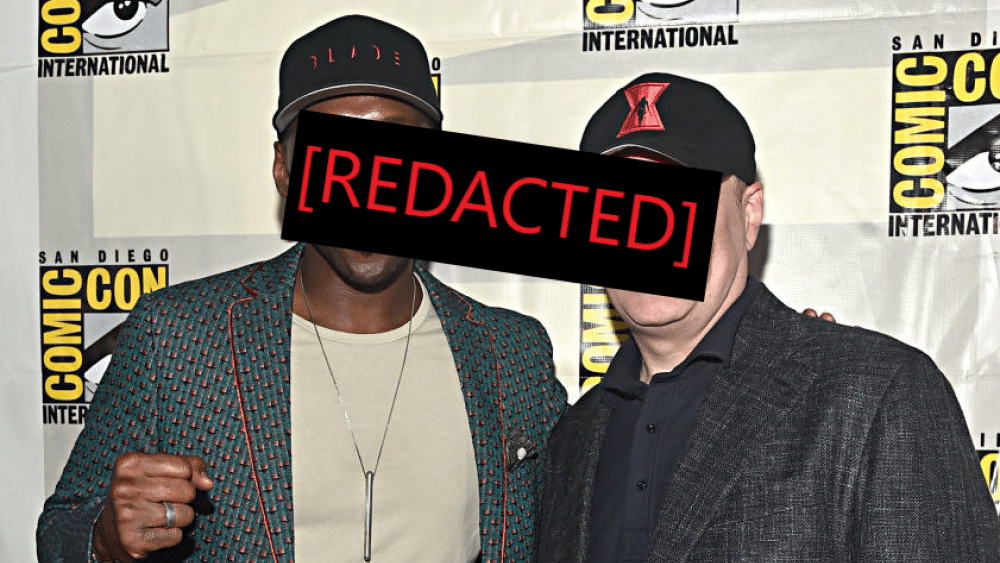It’s two tales for the price of one as Jubilee gets sucked into a Mojo-fied version of the X-Men arcade game and Storm deals with the fallout of her power loss as she grows closer to Forge in X-Men ’97 episode 3, “Motendo/Lifedeath Part 1,” directed by Chase Conley and written by Beau DeMayo and Charlie Feldman.
As the title hints at, “Motendo/Lifedeath Part 1” is one of the most structurally unique episodes of X-Men animation. While there have been episodes before that featured an A plot and a B plot (or two unrelated A plots), there’s never been one that bifurcates those plots into their own separate pieces of the episode. Less one episode, this is more like ⅔ of an episode and ⅓ of another that simply aired back to back. Yet despite the subjects of each plot being seemingly so tonally disparate that they wouldn’t support a traditional A plot/B plot cutaway approach, there is some surprising connective tissue between them.
“Motendo” is the more straightforward and less buzzy of the pair. A mostly original tale, it involves Roberto and Jubilee getting sucked into a video game by Mojo for Mojo-y reasons (i.e. ratings). On the surface, it reads a lot like an episode from the original series: light on the cast (Other than brief appearances from more of the cast at the very beginning, Jubilee and Roberto are the only recurring characters to appear in the episode), with the plot designed to teach a lesson (It’s Jubilee’s 18th birthday, and she simply wants to celebrate by playing video games, chafing at Magneto’s dismissal of such childish things, before ultimately accepting that growing up isn’t always fun, but it is necessary). But more than that, the story also serves as a treatise on the power — and danger — of nostalgia.
The lessons Jubilee learns — as she fights her way through a video game that bears no small amount of resemblance to the X-Men arcade game many of the older viewers watching at home likely have fond memories of playing — are delivered in a manner that almost seems like they’re speaking directly to the watching audience, about the need to not dwell in a rosy-colored past and be afraid of moving forward. Whether this coming in the form of an episode of a series that owes its existence almost entirely to the power, allure and perceived monetary gain of nostalgia is deeply subversive or hilariously tone deaf remains debatable. Similarly, the inclusion in “Motendo” of perhaps the deepest continuity cut yet — a sci-fi/punk bondage Jubilee from an alternate future named Abscissa (voiced by original Jubilee actor Alyson Court) who has appeared in exactly one story (“The Crunch Conundrum,” from Wolverine Vol. 2 #51-53) either underscores or undermines the point about nostalgia.
From there, the episode hard pivots into “Lifedeath Part 1,” picking up where the previous episode left off, with Storm having taken up with Forge, a mutant inventor who believes he can restore her powers. This section is a pretty direct adaptation of Uncanny X-Men #186, a celebrated issue featuring lush art from Barry Windsor-Smith that dealt with the aftermath of Storm losing her powers in the previous issue against the backdrop of a budding romance with Forge (Storm in the animated episode is even wearing the same kind of overalls she did in the comic). The beats here are familiar to anyone who’s read the comic — the pair grow close, Forge admits both that he played a role in the creation of the tech that stole Storm’s powers and that he loves her, Storm storms off and into danger — but they are adapted with aplomb. Alison Sealy-Smith’s performance of Storm takes some heat for the frequency with which it escalates into loud, flowery pronouncements, but that works to her benefit here, imbuing a quieter, more reserved Storm with an acute sense of loss and despair, making the moments when that quiet is punctuated — such as her reaction to Forge’s admissions — all the more impactful.
As the series has done in the past, it also displays its knack for distilling a character down to their essence for a more general audience. Comic book Forge is a character awash in multiple identities: mutant, superhero, inventor, mystic, government contractor, American Indian, warrior with ties to Vietnam. “Lifedeath Part 1” cuts through all that to get to what matters in the moment: He’s an inventor, he has some skeletons in his closet and he’s drawn to Storm. There are Easter eggs aplenty for knowledgeable fans (including a shot of Forge with the Peter David-era government-sponsored X-Factor team and what looks like a picture of him standing arm-in-arm with Bastion), but the story is concerned only with what matters at the moment, not overwhelming the immediacy of the Storm/Forge relationship with a bunch of complex backstory.
Yet for all that these two stories are seemingly unrelated, to the point that they are structurally kept at arm’s length from one another, they share some things in common. Both are essentially character spotlights, concerned mostly with Jubilee and Storm, respectively, and their male companions. No other X-Men play notable roles in either tale. Furthermore, set aside their plots involving extradimensional video games and power-removing blasters, and both stories are about a pair of people developing feelings for one another. “Motendo” ends with Jubilee planting one on Roberto before the pair collapse onto her bed (This show continues to be, delightfully, WAY more horny than the entirety of the previous series combined). “Lifedeath” climaxes with Forge declaring his love for Storm after admitting his role in her depowering. It’d be tough to describe both these stories as love stories — both are more concerned with other things — but elements of that exist in both.
Similarly, the central antagonists of both are villains who get their power by feeding on negative emotions. I raised my eyebrow at the reveal that Mojo is noticeably thinner because his girth is tied to his relative power in Mojoworld, and with ratings down, he’s struggling to maintain control and weight. This is a pretty big departure from comics Mojo — who also gains or loses political power as a result of the ratings his content generates, but remains physically large no matter what. But put in the context of the series’ reimagining of the Adversary as a demonic being who feeds on misery, it makes a little sense. The changes to these villains create further thematic connective tissue between the otherwise dissonant “Motendo” and “Lifedeath” plots.
For all that, this probably isn’t a trick the show can deploy too often. The rhythms of the A plot/B plot cutting back and forth are such a familiar element of TV episodes (and comic books) that to deviate from it too often would be off-putting. And while there is SOME connective tissue between the tales, it’s relatively thin, and the episode is working hard to hold it together. That’s probably not something it can do on the regular. But it’s nice to see the show trying different ways to tell its stories and be less adherent to its earlier Saturday morning model.
X-Tra Facts
- Dialogue exchange of the week: Gambit (after Magneto brings Rogue coffee): “I’ll take a cappuccino if you’re taking orders.” Magneto: “No.”
- I guess Roberto is just around now?
- Cyclops and Jean are said to be at the United Nations, which is the kind of hand-wavy dialogue the original series would use to cover for the real explanation of “It’s too expensive for the animators to draw all the characters who aren’t important to the plot,” but which is likely setup for the next episode involving the fate of Genosha.
- The Motendo is obviously named after Ninendo, but the console looks a lot like a Sega Genesis.
- Storm asks Forge how he got his bionic limbs. He says, “I was a soldier, there was a war,” which is a pretty elegant solution to the sliding timeline and comic book Forge’s ties to Vietnam.
- Forge mentions that his work was used by a scientist in Scotland to create the power-dampening collars used by the Genoshans. If I remember the first season of X:TAS correctly, I believe this a reference not to Moira MacTaggert but to Mystique, who was posing as a scientist named Dr. Adler to muck with mutants’ powers for Apocalypse (It’s how Angel became Archangel and one of Apocalypse’s Horsemen).
- Forge falling in love with Storm super fast is part of the point, and largely carried over from the comic, but still, that escalated quickly. Storm’s response was spot on.
- Does the presence of the Adversary here suggest that “Lifedeath Part 2” will be an abbreviated adaptation of “Fall of the Mutants,” a la “Fire Made Flesh” and “Inferno” and end with the X-Men seemingly dead?
Austin Gorton also reviews older issues of X-Men at the Real Gentlemen of Leisure website, co-hosts the A Very Special episode podcast, and likes Star Wars. He lives outside Minneapolis, where sometimes, it is not cold. Follow him on Twitter @AustinGorton






